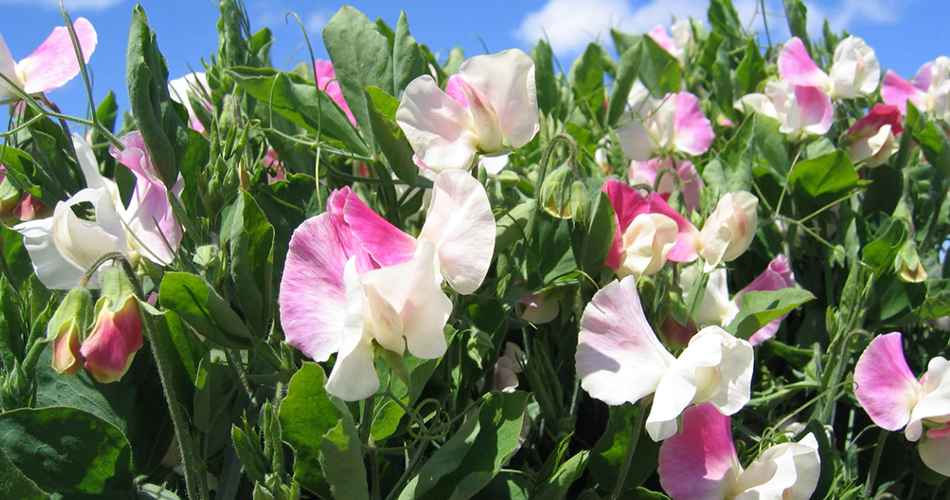Sweet pea. In 1699 a monk found some butterfly-shaped flowers growing wild in the fields of Sicily. He sent a handful of their seeds to a doctor in England. From the offspring of these seeds have been selected the several hundred varieties of sweet peas which are today the daintiest of garden flowers. The sweet pea belongs to the same family as the edible pea. The original flowers were purplish blue in color. Gardeners soon began to select new colors and larger flowers than were found in the wild plant. In the United States interest in sweet peas did not begin until the 1890′s. Today, however, thousands of acres in California alone are devoted entirely to growing sweet peas.
The sweet pea vine has rough, winged stems. The thin, pale green leaves bear tendrils which help to support the plant in climbing. There are two general types of sweet peas; the tall and the dwarf. The fragrant blossoms of each type vary in form from single to hooded double. In texture they vary from smooth and velvety to wavy and crinkled. The colors range from white through all the pastel tints, to blue, red, and purple.
The seeds should be sown in early spring in cool climates or in the fall in warm climates. The soil should be fairly rich and well drained. The bed should be in a rather shady spot. It is important to choose a place where the roots of trees will not rob the soil of richness. The seeds should be planted about six inches apart. They should be covered with about one inch of soil. As the plants come up the earth should be rounded up toward the vines to form a low ridge. Trellises or strings are needed to support the vines. Throughout the season the plants should be cultivated and watered. The blossoms should be picked daily, as flowering stops as soon as seeds are allowed to form. Most abundant flowering occurs when the weather is cool.


Be First to Comment